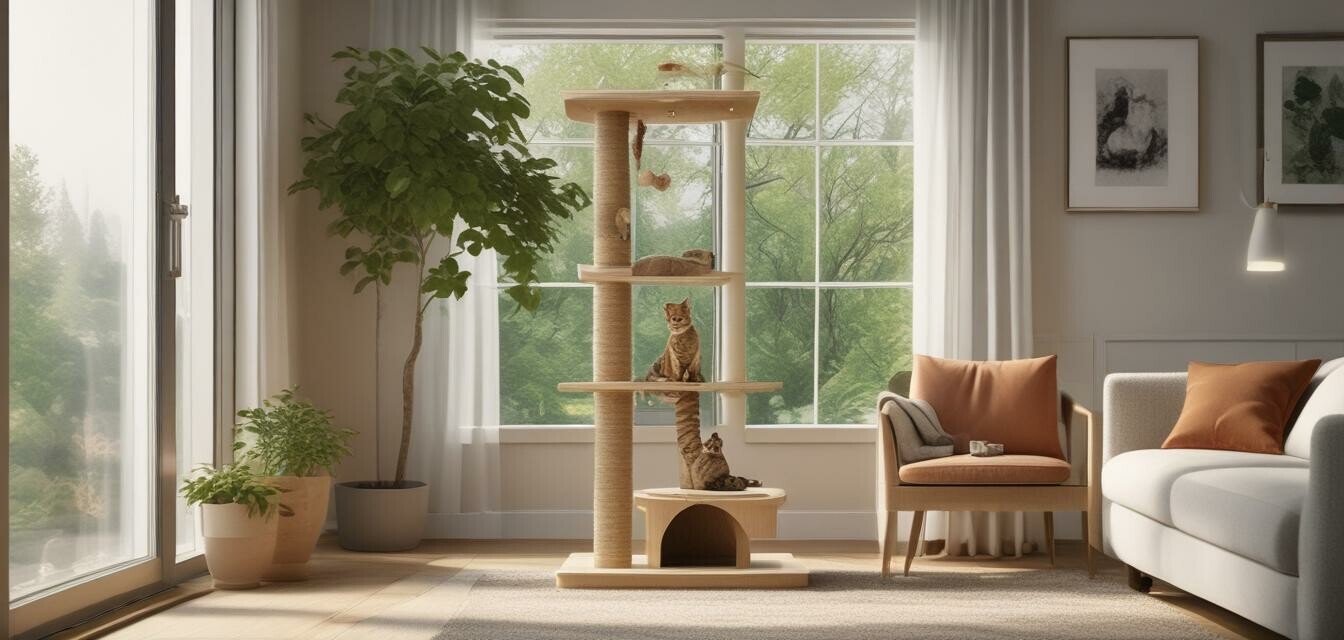
A Guide to Choosing the Right Cat Tree
Key Takeaways
- Consider the size and space available in your home.
- Choose a cat tree with multiple levels for engaging play and exercise.
- Look for durable materials and stability in construction.
- Incorporate scratching posts to satisfy your cat's natural instincts.
- Make sure it includes cozy spots for rest and relaxation.
Choosing the right cat tree is essential for enhancing your feline friend’s health and well-being. A good cat tree provides not only a place to play but also a safe retreat and a cozy resting spot. In this guide, we will explore various factors to consider when selecting the best cat tree for your beloved pet.
Why Invest in a Cat Tree?
Cat trees cater to your cat's instinctual needs, providing a vertical space for climbing, scratching, and relaxing. By investing in a high-quality cat tree, you encourage your cat to engage in natural behaviors, which can mitigate destructive tendencies and promote overall happiness.
Factors to Consider When Choosing a Cat Tree
1. Size of the Cat Tree
The dimensions of the cat tree should match the space you have available. Here's a quick table of suitable sizes based on your home setup:
| Home Size | Recommended Cat Tree Size |
|---|---|
| Small Apartments | Compact (up to 50 inches tall) |
| Medium Homes | Standard (50 - 68 inches tall) |
| Large Spaces | Large Multi-Level (over 68 inches tall) |
2. Number of Levels
A multi-level cat tree encourages exercise and play. Cats love to explore and climb high, so consider a tree with various platforms and hideaways. A tree like the Allewie 68 Inches Cat Tree House is an excellent choice, featuring:
Allewie 68 Inches Cat Tree House
This multi-level cat tree features a condo, scratching posts, and comfortable resting areas for your feline friend to enjoy.
Learn More3. Material and Durability
The quality of materials used in a cat tree is crucial. Look for solid construction that can withstand your cat's weight and activity. Here are some common materials:
- Wood: Provides stability and durability.
- Carpet: Offers a soft surface that most cats enjoy.
- Sisal: Ideal for scratching posts; promotes healthy claw maintenance.
4. Stability and Safety
Ensure that the cat tree is stable and won't tip over easily. A tree with a broader base provides better support. Safety features can include:
- Anti-tipping straps, especially for taller structures.
- Rounded edges to prevent injury.
- Non-skid feet for stability on different surfaces.
5. Style and Aesthetics
Finally, consider how the cat tree fits into your home decor. Cat trees are available in various colors and styles that can complement your living environment. Think about:
- Color schemes that match your furniture.
- Designs that blend with your room’s overall aesthetic.
- Compact trees that don’t feel out of place in tight spaces.
How to Introduce a New Cat Tree
When you bring a new cat tree home, it's essential to introduce it properly:
- Place the cat tree in a familiar area for your cat.
- Use treats or toys to lure them onto the cat tree.
- Be patient; some cats may take time to adjust.
Conclusion
Investing in the right cat tree is crucial for your feline companion's happiness and wellness. By considering the factors outlined in this guide, you can create a play area that meets your cat's needs and enhances your home. Happy tree shopping!
Tips for Beginners
- Start with a budget and stick to it when looking for a cat tree.
- Read customer reviews to find the best options out there.
- Visit local pet stores to see the trees in person before purchasing.
Related Resources
For further insights on pet care and choosing the right products, check out our other articles:

